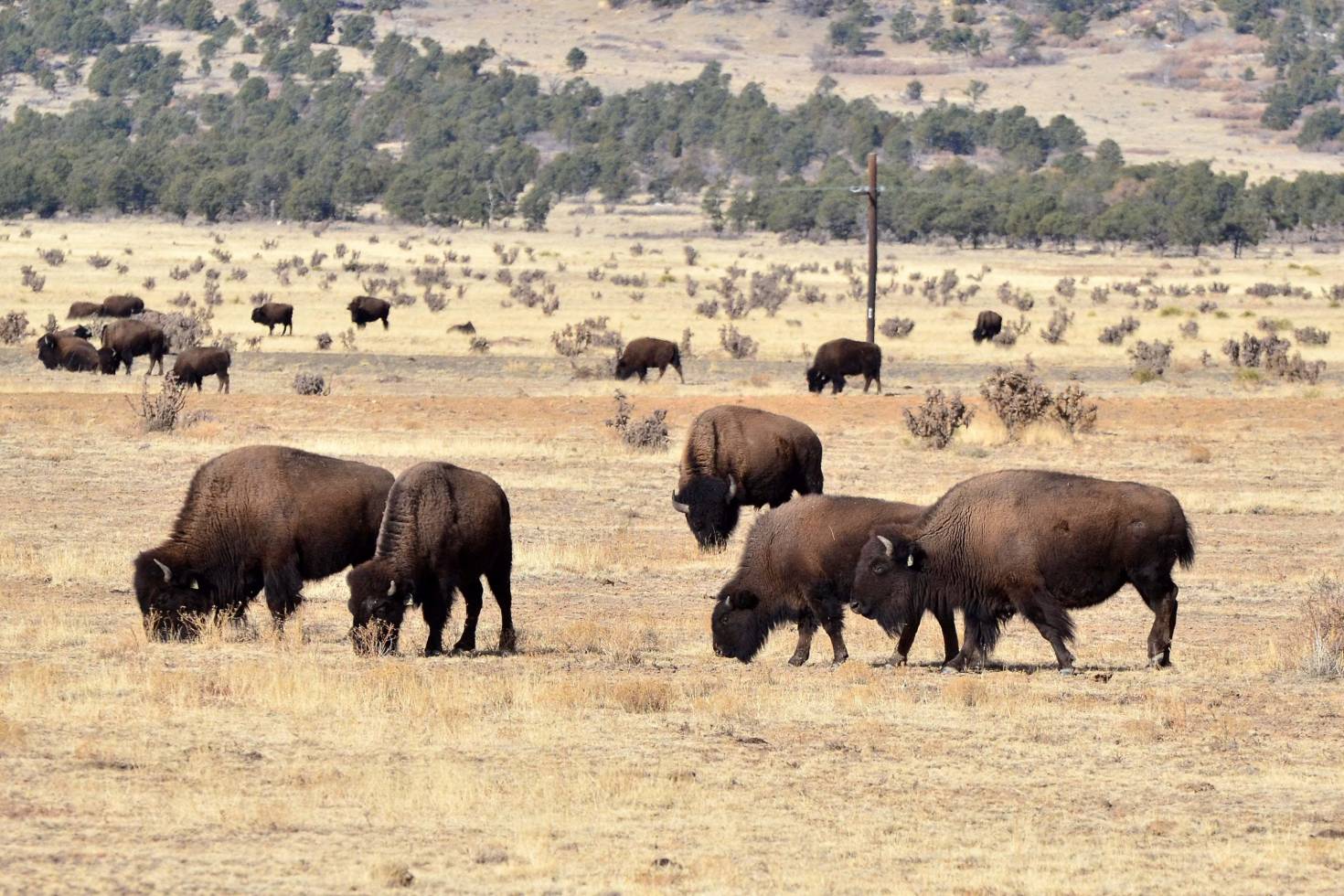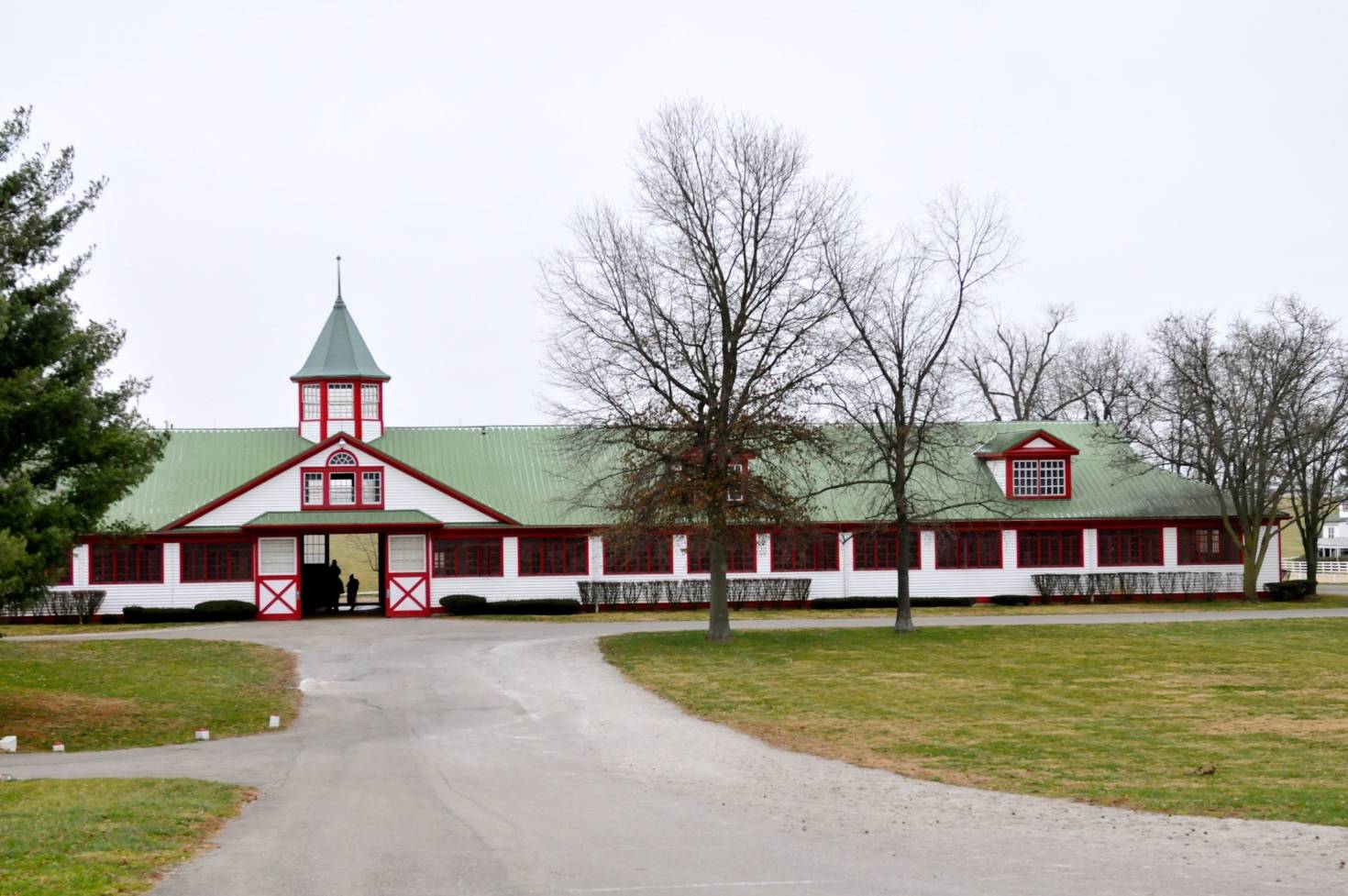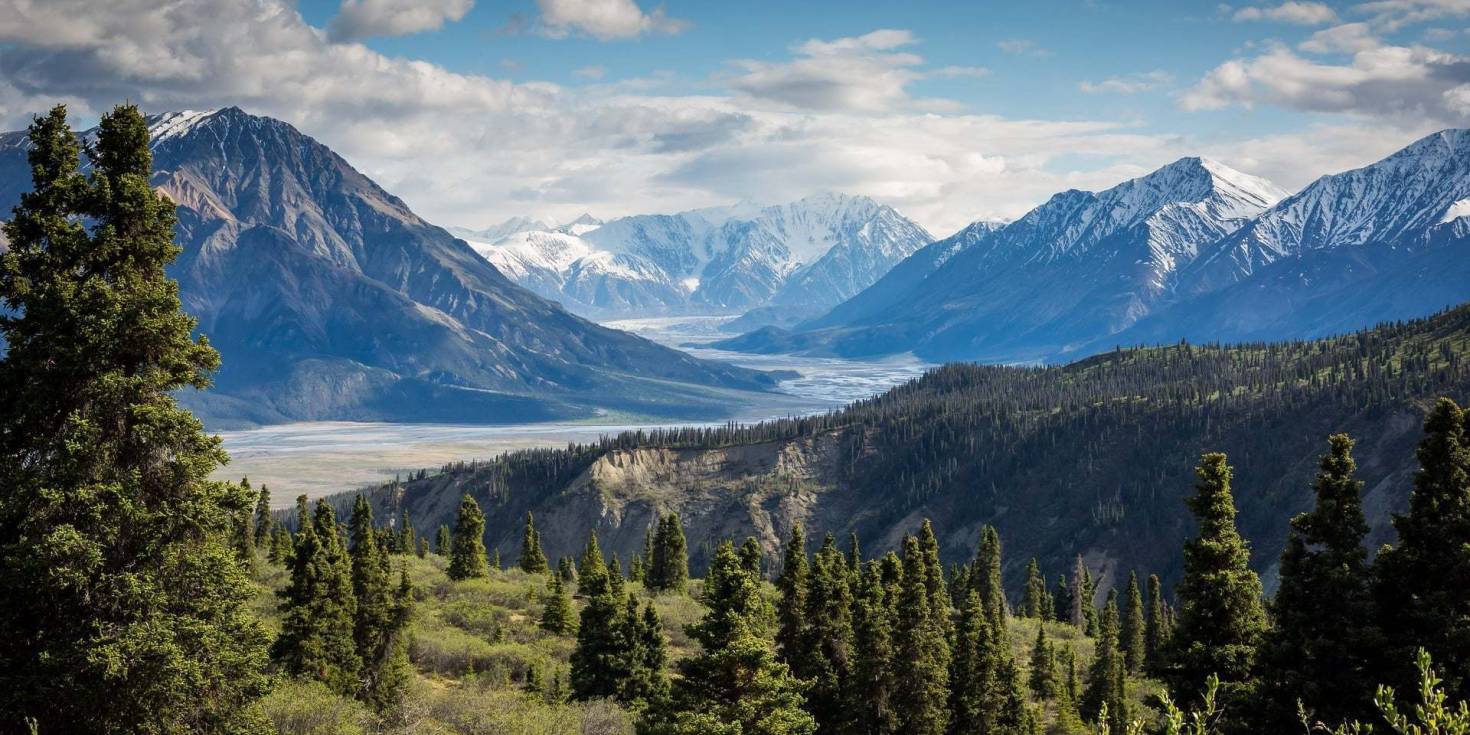Many people think the original American dream was about greed, discontentment, and always wanting more. This isn't necessarily the case. The original American dream was not about getting rich, but escaping tyranny and creating a nation where the most important principle was freedom. Not only was it meant to be a principle, but a right of citizens who lived under that nation.
The freedom they were pursuing was freedom of speech and religion, freedom to create businesses, freedom to start families, freedom to always want more or to be content, freedom to be who you are, and ultimately the opportunity to chase your wildest dreams and turn them into a reality. Individual land ownership was a large part of that original dream, and even still there’s something special about land. If land ownership is a part of your dream, too, you can start searching for land for sale now.
The best investment on earth is earth.Louis Glickman
Around 66% of U.S. land is privately owned and you might be surprised at how much land the 20 largest landowners actually own. They may have made their fortunes in other endeavors, but sooner or later America’s wealthiest tycoons seem to think land is a solid investment. The Land Report tracks United States' land ownership and according to their research in the 2017 Land Report 100, these are the 20 largest landowners in the U.S.
1. John Malone - 2,200,000 acres
Billionaire media mogul John Malone has ranked #1 on the list since 2011 when he purchased more than 1 million acres of timberland in Maine and New Hampshire. In light of being at the top for years and having been one of the most powerful figures in cable television, Malone keeps somewhat of a low profile. In addition to his timberland in the Northeast, he owns ranches in Colorado, New Mexico, and Wyoming, as well as the renowned Bridlewood Farm in Florida that’s produced over 100 horse-racing stakes winners. If you're interested in harvesting timber, take a look at our timberland for sale.
2. Ted Turner - 2,000,000 acres
Apparently, cable television isn’t a bad choice when it comes to a profession, because coming in at #2 is CNN and WTBS founder Ted Turner. Part of Turner’s “claim to fame” when it comes to land is that he’s managed to accumulate the world’s largest bison herd at around 55,000 heads. Much of his land is used to supply his restaurant chain, Ted’s Montana Grill, with bison meat. Turner began buying ranches in the 1970’s and has been deeply committed to conservation. He was honored in 2016 with the Legacy Landowner award by The Land Report. Of the many ranches he’s acquired, Vermejo Park Ranch is the largest spanning 590,823 acres and is the largest privately owned, contiguous tract of land in the United States.

3. Emmerson Family - 1,959,666 acres
If you want to be one of the largest lumber producers in the country, you’re going to need to own a lot of trees. That’s exactly what Archie Emmerson did when he founded Sierra Pacific Industries. According to Forisk Consulting, SPI was the 4th largest lumber producer in the U.S. as of March 31, 2017, and according to our research, was 5th on the list of entities that own the most U.S. land as of July 2018. They plant up to 6 million trees a year among the timberland they own and manage in California and western Washington. On their website, they provide a map of their landholdings along with their mills and plants.
4. Stan Kroenke - 1,380,000 acres
Coming in next on the list is American sports franchise owner Stanley Kroenke. Although he’s commonly known for the many prominent sports organizations he owns, he’s also a well-known landowner. His most notable purchase was in 2016 when acquired the Waggoner Ranch in north Texas for $725 million, likely the most expensive ranch sale ever. It spans 6 Texas counties, is about half the size of Rhode Island, and is the largest ranch within one fence line. Kroenke has proved to be a good steward of the land he’s purchased as he’s implemented several enhancement initiatives including improving the bird populations as well as stream and wetland restoration. Want to own your own ranch? Check out our ranches for sale.
5. Reed Family - 1,370,000 acres
5th on the list is another major player in timberland… the Reed family. Green Diamond Resource Company, started in 1890 and now owned by the 5th generation of Reeds, is a forest products company that owns land in 8 states including timberland in California, Georgia, Oregon, and Washington. Operating under strict sustainable forest practices and high-quality stewardship, the Reeds harvest less than 2% of their lands annually and all harvested areas are quickly replanted with native species to emulate nature’s natural process and start the forest cycle over again.
6. Irving Family - 1,246,236 acres
K.C. Irving started out with a single sawmill in New Brunswick in 1882 and became one of Canada’s foremost entrepreneurs and industrialists. When he died in 1989 at the age of 90, he was the 11th wealthiest man in the world with an estimated worth of $10 billion. During his life, he expanded his company into a giant conglomerate of companies informally known as the Irving Group of Companies. One of his companies, J.D. Irving Limited, and its subsidiary Irving Woodlands, acquired over a million acres of timberland in Northern Maine. As part of their sustainable forestry initiatives, they planted around 2.9 million trees in 2017 and over 960 million since the company’s inception.
7. Brad Kelley - 1,150,000 acres
Born and raised in Kentucky, Brad Kelley’s passion for land goes back to his youth. Not only was he a secretary for the Future Farmers of America and named Kentucky high school conservationist of the year, but he bought his first piece of land when he was only 17 years old. His most recognized acquisition was in 2012 when he bought Calumet Farm, a 762-acre thoroughbred horse breeding and training farm established in Lexington, KY. Kelley also owns ranches in Florida, New Mexico, and Texas, and prefers to stay out of the public spotlight, rarely giving interviews. If you're looking for horse land, head over to our equestrian property for sale.

8. Singleton Family - 1,100,000 acres
Land ownership for the Singletons started in 1986 with Henry Singleton’s purchase of the 81,000-acre San Cristobal Ranch in Santa Fe, NM. Dr. Singleton’s vision for buying the ranch was not only to breed cows and horses but to preserve New Mexico ranching heritage that had begun over 400 years ago. Additional purchases in New Mexico and California propelled the Singleton’s total acreage to over 1 million. Today, Singleton Ranches is one of the top 5 ranching operations in the U.S. in terms of total acreage and cattle.
9. King Ranch Heirs - 911,215 acres
Designated as a National Historic Landmark in 1961, the King Ranch is a massive 825,000 acres in southern Texas that covers more land than the state of Rhode Island. Interestingly, the ranch isn’t contiguous and its 4 separate sections include portions of 6 different Texas counties. The family controls a variety of operations including hunting, cattle, quarter horses, turfgrass, citrus, farming, and more. King Ranch led some of the first cattle drives and has produced champion thoroughbred horses. The heirs also own farmland in Texas and acreage in Florida. Employees of the King Ranch traveled to Rockport where they were instrumental in the Hurricane Harvey relief effort.
10. Pingree Heirs - 830,000 acres
The Pingree’s real estate portfolio began over 170 years ago when David Pingree sensed his city wouldn’t remain a major shipping port much longer. He made his first timberland purchase in Maine in 1841 and it wasn’t his last as his company, Seven Islands Land Company, ended up acquiring over 1 million acres of shore frontage, deer yards, and wetland habitat. In 1990, the family deeded over 5,000 acres to the Nature Conservancy for the Big Reed Forest Reserve. Today, the Pingree’s land is consolidated in Maine and still managed by family members.
11. Peter Buck - 800,000 acres
Peter Buck is new to the list and has been buying up North Woods timberland in Maine. In 2016, through a trust, he purchased around 300,000 acres bringing his Maine land holdings to some 800,000 acres. Wondering how he made his fortune? Have you ever heard of a little fast food restaurant named Subway? While working as a nuclear physicist he loaned his friend, Fred DeLuca, $1,000 to open a sandwich shop to pay his way through college. He still owns half the company which is comprised of 45,000 stores in more than 100 countries.

12. Ford Family - 783,000 acres
Similar to K.C. Irving, Kenneth Ford started out with a single sawmill in Roseburg, OR and was a pioneer in the forest products industry. In 1936, he founded Roseburg, a lumber company at the time, and bought 15,000 acres of timberland. Later on, they purchased over 500,000 acres of forestland in Oregon and Northern California. Their latest acquisition was 158,000 acres in North Carolina and Virginia.
13. Wilks Brothers - 702,000 acres
Dan and Farris Wilks were sons of a bricklayer and founded a masonry company in 1995. That’s not where they made their multi-billion dollar fortune though. In 2011 they sold their 70% share of Frac Tech Services, a hydraulic gas and oil fracking company currently known as FTS International, for a massive $3.5 billion. Like the other land barons on the list, they believed land was a good place to put a portion of their money. They purchased the 62,000-acre N Bar Ranch from Tom Siebel who has been included in the Land Report 100 in the past and are the largest landowners in Montana. They also own land in Texas and Idaho and recently added 30,000 acres to their portfolio.
14. Briscoe Family - 640,000 acres
Fame in the Briscoe family started a long time ago when Andrew Briscoe signed the Texas Declaration of Independence. When Dolph Briscoe Jr.’s father died in 1954, he became the owner of the 100,000-acre Catarina Ranch in southern Texas. He went on to become a member of the Texas House of Representatives and was elected Governor of Texas in 1972. When oil and gas were discovered on his land, he thought it might be a good idea to buy more and today the family owns ranches and oilfields throughout the state of Texas.
15. Lykes Heirs - 615,000 acres
What began as a 500-acre cattle ranch in Hernando County, FL has grown to an operation of over 600,000 acres in 2 states including cattle, citrus, farming, forestry, land and water resources, recreational hunting, and insurance enterprises. In the 1870s, Dr. Howell Lykes gave up his medical practice to take over that 500-acre ranch and in 1900 established Lykes Bros. Inc. with his 7 sons. In the 1930s, they purchased a 265,000-acre ranch in west Texas. The 337,000-acre Lykes Ranch in Florida is one of the largest contiguous tracts in the state. An interesting piece of history is that one of their ships from their steamship company was the first to sail into Shanghai harbor after the U.S. established relations with mainland China. If you're in the market for your own citrus farm or agricultural property, check out our farmland for sale.

16. Hamer Family - 600,000 acres
Another new addition to the list is the Hamer family. Jim Hamer started with a single sawmill in 1976 and founded Jim C. Hamer Companies, a leader in hardwood forest products. They eventually grew the land they owned to 600,000 acres of timberland in the Appalachian region of the eastern United States. The company also owns and manages 5 sawmills in West Virginia and Kentucky as well as 3 dry kilns and lumber yards in West Virginia. These operations produce 50 million board feet of green lumber and 25 million board feet of kiln-dried lumber a year. Get this… the Hamers don’t even waste their sawdust. They're known for 5 generations of innovative thinking and they make Hamer fuel pellets out of their excess sawdust.
17. O’Connor Heirs - 587,000 acres
Thomas O’Connor gave the saying “the luck of the Irish” true meaning in 1834 when he was granted 4,428 acres of land near present-day Victory by the Mexican Government after the Battle of San Jacinto. The Irish immigrant’s son, D.M. O’Connor, continued where his father left off and expanded the O’Connor’s portfolio where it now has grown to almost 600,000 acres. Eventually, oil was discovered on their ranches in southern and western Texas. The small town of Port O’Connor is named after its largest landowner, Thomas O’Connor, and is located near the Gulf coastline between Galveston and Corpus Christi in Calhoun County, TX.
18. Martin Family - 570,000 acres
Similar to other beginnings mentioned, the Martin family tradition began with timber industry pioneer and family patriarch Roy O. Martin, Sr. and a single sawmill in Alexandria, LA in 1923. His mantra was “Buy land and hold land because they don’t make any more land, “ and that’s exactly what he proceeded to do. His first major land purchase was the 6,500-acre Black Lake timber block and today the family owns nearly 600,000 acres of timberland in Louisiana through their company Martin Timberlands L.L.C. that supplies timber to their RoyOMartin mills. Ellis Martin, who was inducted into the Louisiana Agriculture Hall of Distinction said, “I see land as the basic foundation of the whole business.”
19. Thomas Peterffy - 561,000 acres
Coming in at #19 is Hungarian billionaire Thomas Peterffy who is new to the list. He left Budapest when he was 21 to come to the U.S and is now the CEO of Interactive Brokers, one of the largest U.S. electronic brokerage firms. Peterffy has become the wealthiest Hungarian with an estimated net worth of $19.4 billion. In late 2015, a gigantic swath of land in Florida, around 560,000 acres, was purchased by a mysterious company named Four Rivers Land & Timber. Citizens in the community were eager to know who the new owners actually were, so they could find out who they were dealing with. Finally, the mystery was solved when they discovered Thomas Peterffy was behind the purchase.
20. Stimson Family - 552,000 acres
Finally, the Stimson family completes the list of the top 20 U.S. landowners. To find their beginnings, you have look back before the Civil War in 1850 when T.D. Stimson felled his first tree. Eventually, Stimson Lumber Company became more aggressive with their land acquisitions. Today, they own and operate seven mills in Oregon and Idaho and their ownership of over 550,000 acres of forestland stretches into eastern Washington, Oregon, Montana and Idaho.

Altogether, these 20 landowners have amassed a total of 20,557,117 acres or 0.85% of the entire United States. The top 100 own 40,313,606 acres, or 1.7% of the U.S. As you can see, the 20 largest landowners own over 50% of the total acreage owned by the top 100, although they don’t compare to the nation’s largest landowner, the Federal Government, that owns around 640 million acres. If you need help putting these large amounts of land in perspective, head over to our blog on how big is an acre of land.
Wealthy land barons continue to snatch up large tracts of land and as Land Report Editor Eric O’Keefe stated, this represents “the growing appeal of land as an asset class.” The good news? You don’t have to be a billionaire or even considered wealthy to own land. You can find timberland, ranches, farmland, hunting land, and all types of land for sale here on LandSearch. There's a variety of financially economical land in every shape and size you can think of available throughout the U.S. waiting for people to take advantage of and realize their own personal part of the original American dream.

